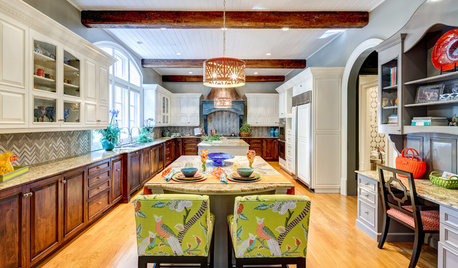We are in the middle of planning a kitchen remodel, and have decided (99%) on a 36" 6-burner Capital Culinarian rangetop.
Now I need to consider a range hood, and I'm afraid I'm not really sure how the different elements work together. For the past 10 years we've lived with a paltry little Nutone vent that hardly sucks up the steam from cooked rice, so our goal is to install a system that actually works. This is a priority for us (especially my wife), so we've got to get this one right.
What we want:
1. Effective - no greasy smoke swirling around the kitchen and into the dining room
2. Quiet (as quiet as possible)
3. Cost. We're willing to pay but don't want to go overboard. We are more concerned with effective operation than any bells and whistles or aesthetics.
I have read about the Abakka Hyex exterior blowers and they look intriguing but I don't understand exactly how they work. What other elements would I need to purchase besides that unit? Ducting? A hood liner? What else? Would I need to buy everything from Abakka or could I mix and match manufacturers?
We are in Northern California so I don't know that MUA is a factor. The hood will also be positioned between two windows.
Any advice is appreicated!











zartemis
tadhg555Original Author
Related Professionals
Beavercreek Kitchen & Bathroom Designers · Georgetown Kitchen & Bathroom Designers · Salmon Creek Kitchen & Bathroom Designers · Wentzville Kitchen & Bathroom Designers · West Virginia Kitchen & Bathroom Designers · Covington Kitchen & Bathroom Designers · Holden Kitchen & Bathroom Remodelers · Bethel Park Kitchen & Bathroom Remodelers · Port Angeles Kitchen & Bathroom Remodelers · Portage Kitchen & Bathroom Remodelers · Wilmington Kitchen & Bathroom Remodelers · Eufaula Kitchen & Bathroom Remodelers · Lakeside Cabinets & Cabinetry · Sunrise Manor Cabinets & Cabinetry · Watauga Cabinets & Cabinetryhilferty77
sjerin
zartemis
sayde